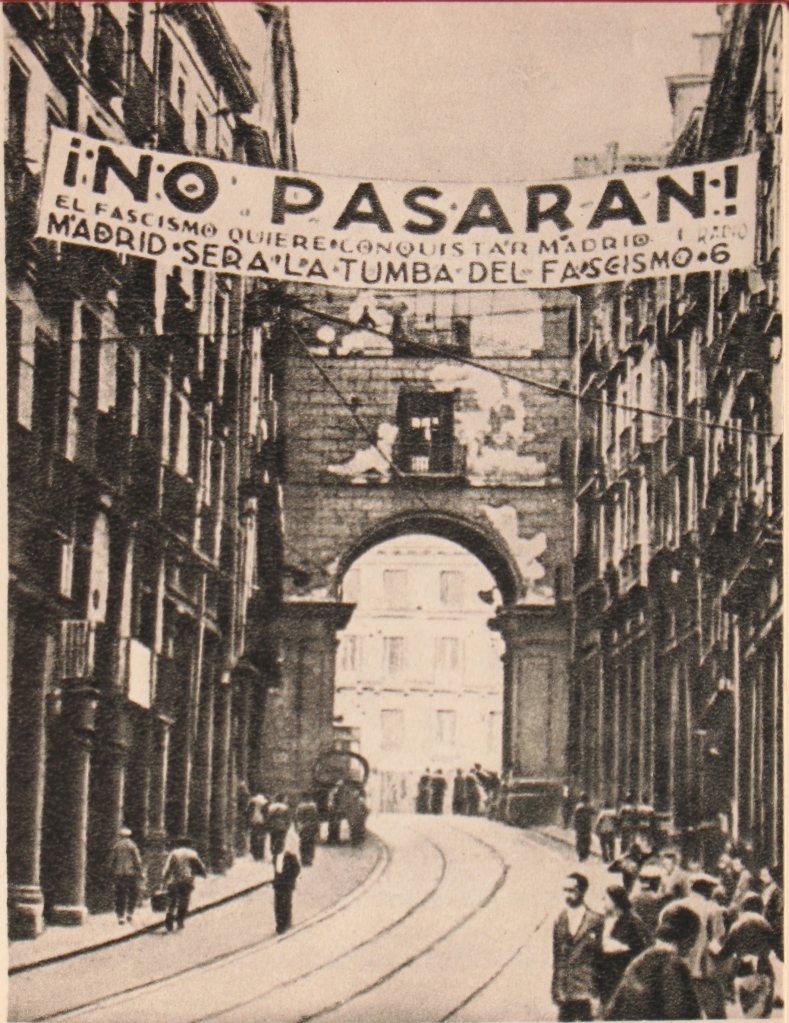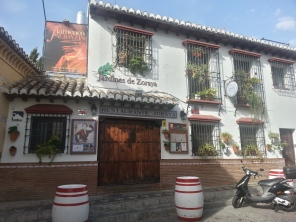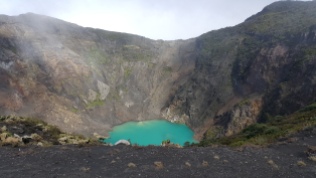Since this fall semester is clearly “unprecedented”, unpredictable, and a whole host of adjectives that are pretty much ALL stress-inducing, I am taking the opportunity to experiment in my senior-seminar on 20th-century Spain. Last fall I taught a similar course with a focus on “Gender & the City”, but this fall I’m only using two of the same name novels — Carmen de Burgos’ La rampa (1917) and José Díaz Fernández’s La Venus mecánica (1929) — and focusing more on the city of Madrid and the narrative cartography presented by and within these texts. I’ve re-titled the course “Mapping Madrid in La Edad de Plata (1898-1936)”, and I’m maintaining a hashtag to keep track of the articles, images, and maps we find and explore each week. You can check that out and follow it here: #MappingMadridKSU. My students’ final project will entail a creative cartographic interpretation of one of the literary texts (or a portion of it), or of a cultural or historical theme that they decide to explore through the literature or through our discussions of secondary historical or cultural readings in class. I’m still plotting out the details, but at the same time, I’m planning to allow a lot or room to be creative. Since this project is inherently interdisciplinary, I’m hoping this freedom will encourage them to make connections with a topic that relates to their own interests, their other academic majors, and their individual learning styles and talents. This is important, given that the final few weeks of the semester will be fully online, so, in theory (!), the more invested and interested they are in their project, the better they will plan their time and work independently.

To start out our this semester of hyflex instruction — a semester which we had to begin a full week earlier than originally anticipated — I wanted to ease into the idea of how to think beyond a literary text, how to experiment and incorporate creativity into our analyses, and how to be uncomfortable with not knowing how to proceed. Creative endeavors, after all, take time — as do reading and writing — which we (professors AND students) too often forget. In any case, I had my class look at some examples of artistic or non-traditional maps that “re-draw” the world in a short Gallery-Article in El Pais, and I assigned them a quick YouTube video about play and the importance of creativity in 21st-century learning, Yesmin Kunter’s “Let’s Play”. In our second full class, I split them into three (socially-distanced and masked!) groups and tasked them with creating a “cartographic representation of Rafael Alberti‘s 1937 poem, “Romance de la defensa de Madrid”. They only had about 30-35 minutes to read the poem and represent it — which really wasn’t enough time to make a super-detailed map — but this would be a fun activity to repeat in a full 50–minute class period after having assigned students the poem to read and analyze for homework. In any case, they seemed to have fun with it and it was a good way to review and re-visit some literary/poetic terminology during the first week of class without making things too stressful or piling on too many “figuras retóricas”. After all, masked, socially-distanced, hyflex instruction with extra cleaning supplies all over the room is stressful enough for everyone. At the end of this post, I’ve attached a PDF of the poem-mapping-activity, which contains the poem, a super-quick guide to analyzing it (reminders of what to look for), and a breakdown of the elements involved in creating a “cartographic narrative,” which I adapted from an excellent (but way too detailed for the second-class-of-the-semester) article on “El mapa y la comunicación cartográfica“. The main principles are to (1) “collect data”, which I view as essentially performing a literary analysis of a text; (2) organize and manipulate this data to plan a design; (3) visualize the shape, scale, and borders of the map; (4) interpret your data to create a ‘narrative’. We’ll be returning to selections of this article as work on projects progresses…. In the meantime, below are the maps they produced in this short activity. One group clearly had an art major; another was very detail-oriented; and another preferred to personify the city (at least they got a nice review and will now remember prosopopeya).



Only one week after beginning my class with this poetry-mapping activity — which required students to draft a cartographic illustration of a poem commemorating the bombing of Madrid during the Spanish Civil War — I came across an article on my Twitter feed with the title, “Cuando Madrid Fue Guernica“. It’s an excellent discussion of the areas in Madrid that were destroyed by — and protected from — aerial attacks during the Spanish Civil War, 1936-39. The articles discusses the “Plano de Madrid Bombardeado”, a map that was created during 2018-19 to represent the areas of the city that suffered the most vicious aerial attacks. As my readers know, I’m somewhat obsessed with maps, and I had actually first learned about and even downloaded this wartime map from a 2019 article, “El mapa que le devuelve a Madrid su identidad de ciudad bombardeada“. Both of these articles provide detailed historical and archival information, as well as quotes and comments from the map’s creators, Enrique Bordes and Luis de Sobrón, both professors of Architecture at the Polytechnic University in Madrid (UPM). With this project, Bordes and de Sobrón bring to light the ways in which Madrid’s urban identity has been (re)made throughout the 20th century. Specifically, when the Civil War ended in 1939, the new Francoist Regime was intent on presenting the Spanish capital as a glorious, victorious urban center. Yet Madrid’s previous Civil War era identity — based on a fierce and enduring resistance that resulted from becoming the first major European city to be strategically bombed in wartime attacks (the Spanish Civil War preceded World War II) — was all but erased. The effort to cover up or eliminate the historical and cultural significance of Civil War destruction wrought upon a stubbornly resistant capital city is yet another piece of to be added back into the puzzle of Spain’s fractured historical memory.

A high-quality image of the map (a copy of which I’ve included below) can be downloaded via the Madrid Bombardeado website. This site is open access, although is currently undergoing a few updates to come of its planned features before it will be fully interactive. In the meantime, it’s still an excellent resource and would be especially useful in Spanish culture or literature courses dealing with the Spanish Civil War, either in learning about its historical moment of the 1930s or its elusive, ongoing, and even haunting presence throughout 20th-century Spain, its modern history, and much of contemporary Spanish cultural productions (books, films, human rights projects, documentaries, art and photography exhibits, television programming, etc.).

Professors de Sobrón and Bordes created this visual, cartographic narrative because they realized that so many people were surprised to learn that Madrid was so heavily attacked and destroyed during the Spanish Civil War. While nearly everyone knows about the bombing of Guernica/Gernika in 1937 — immortalized by Picasso in what may arguably be his greatest work — the intense bombings of Madrid that begin in 1936 had largely disappeared from collective historical memory. Their mapping project is a “Map of Memory,” which aims to fill in those gaps in historical knowledge and consciousness so that Spanish citizens, visitors, and tourists in Madrid are aware of the capital city’s more complex history. To collect information, they relied on four principal sources: (1) photography and photo-reports from the 1936-39 era, (2) documentation from Madrid’s Committee of Reform, Reconstruction, and Sanitation (CRRS), (3) records from fire departments, and (4) memories of architects who were among the city’s population. Professor Bordes emphasized that during this research process, he himself was continuously surprised by the magnitude of the bombings and destruction to the city. Anecdotally, from various sources, it has been said that “Madrid was Guernica”, meaning that Picasso may have actually consulted reports, documentation, photographs, and eye-witness accounts from attacks on the heavily-populated Madrid, since in the small Basque town of Guernica/Gernika, in all likelihood, there would have been very few journalists present the precise day of the surprise attack.

It is certainly true that Picasso’s Guernica has ensured that a particularly cruel tragedy of the Spanish Civil War has not and will likely never be forgotten. In fact, Guernica is one of the most popular works of art used in Spanish language, literature, and culture classes throughout the US, and nearly 100% of my students are familiar with it before seeing in my class — even if they do not know the precise history or the massive scale of the work. Because it is so recognizable, I try to use it make connections with lesser-known texts and histories. In a few of my previous Spanish Literature and Culture classes, I had used Guernica in combination with Vicente Aleixandre‘s poem, “Oda a los niños de Madrid muertos por la metralla”. I posted a few years ago about a class activity (which I have since gradually modified) involving the juxtaposition of that particular poem with Picasso’s famous mural here: Picasso’s Guernica and Aleixandre’s Oda: The Spanish Civil War in Art and Poetry. But while the history of this small Basque town of Gernika/Guernica lives on in painting, the bombings of Madrid appear seomwhat more frequently in literature, and especially in poetry. The attacks on the city were in fact memorialized and lamented by numerous poets throughout the Spanish-speaking world, within and outside of Spain. While I have so far incorporated Alberti‘s “Romance” and Aleixandre’s “Oda” into my classes, they are just two examples and both were written by Spaniards. Importantly, Chilean poet Pablo Neruda also penned a poetic memoir to the destruction suffered by the city in 1936 with “Explico algunas cosas“, and Mexican writer Octavo Paz offered Mexico’s support of the Spanish Republic in his 1936 poem “¡No pasarán!,” which bears the title of the oft-repeated phrase that became the fighting hymn, the slogan of strength and resistance throughout the city of Madrid during the war years.

*To be clear*, I don’t meant to imply that there is no artwork commemorating the bombing of Madrid. There are certainly powerful photographs, paintings, and other forms of visual art that pay homage to Madrid’s violent past, but none have reached the same level of renown as Picasso’s Guernica. Horacio Ferrer’s Madrid 1937, Aviones negros, also in the Museo Reina Sofia, is a great example. Painted in an entirely different style than the more abstract, cubist mural, Ferrer’s painting also displays women and children fleeing in fear as the destruction caused by aerial attacks is clearly apparent in the background. This painting was even presented at the same international exhibition as Guernica, the Spanish Pavilion at the 1937 Paris International Exhibition. There are many more examples, but I suppose I will save those for another post, especially given that — like their poetic or literary counterparts — these artistic rendition of “Madrid Bombardeado” span international borders, coming from throughout the Spanish-speaking world and beyond.

What other Madrid-Maps do I need to explore? Do you have any favorites? I’m anxious to get my hands on Madrid in the Novels of Benito Perez Galdos next… though I was hoping to pick up a copy on my next trip to Spain rather than have to pay double for international shipping (#SpanishProfessorMath). But with continued Covid travel restrictions, it looks like I might just have to accept that extra fee.
RESOURCES:
CLASS ACTIVITY: “Romance de la defensa de Madrid” by Rafael Alberti (1937) — Poem, Analysis, Mapping activity as PDF:
Luna S., María Cecilia. “¡No pasarán!: La fuerza de la resistencia madrileña en el poema de Octavio Paz.” Revista Palimpsesto, vol. X, no. 14, jul-dic, 2018, pp. 82-91. Open Access via Universidad de Santiago de Chile here.
Olaya, Víctor. Sistemas de Informacion Geografica. Capítulo 5, Visualización: “El mapa y la comunicacion cartografica“. CreateSpace Independent Publishing Platform, 2016.














Pingback: New Books, Creative Maps, and Literary Art for 2021… plus my optimistic(!) 2020 re-cap | Rebecca M. Bender, PhD
Pingback: Cartographic Narratives: Using Data and Mapping Principles to Teach L2 Literature | Rebecca M. Bender, PhD
Pingback: Geographies of Urban Female Labor and Nationhood in Spanish Culture (1880-1975) (review) | Rebecca M. Bender, PhD